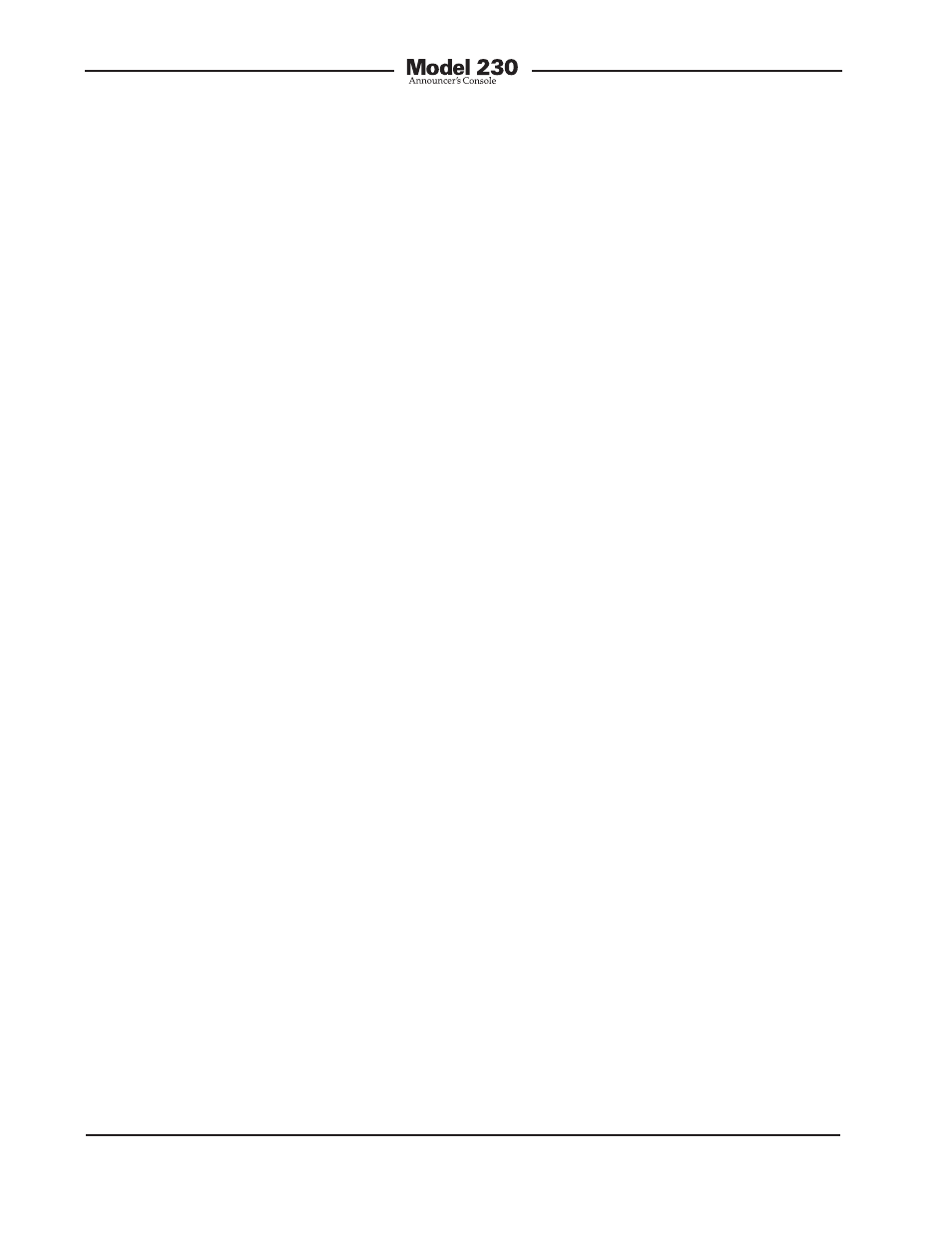Ifb audio levels, Intercom audio levels – Studio Technologies 230 2014 User Manual
Page 36

Issue 9, November 2014
Model 230 User Guide
Page 36
Studio Technologies, Inc.
“party line” systems, inter-channel cross-
talk on intercom lines should not prove
to be a problem. With multiple intercom
stations and beltpacks active at the same
time, the noise level and user voices pres-
ent on these lines should mask any cross-
talk that occurs.
IFB Audio Levels
The Model 230 is designed to operate
best with IFB audio levels that are nomi-
nally –10 dBu. This is the nominal level of
most IFB systems, such as provided by
the Studio Technologies’ Models 41 and
42A. But actually having the correct level
present on an IFB circuit is often a “hit-or-
miss” proposition. During field testing of
prototype announcer’s consoles, Studio
Technologies’ personnel found that a wide
range of nominal audio levels were pres-
ent on “real-world” IFB circuits. Many were
fine, being reasonably close to the desired
–10 dBu. But some were much too low,
while others were much too “hot.” We
observed one unfortunate baseball “color”
commentator being sent interrupt audio
signals so “hot” relative to program audio
as to almost make his ears bleed! This
situation should not have been allowed
to happen.
In defense of field technical personnel,
measuring the audio level of an IFB circuit
hasn’t traditionally been an easy proposi-
tion. But that situation has now changed.
After experiencing this condition in the
“field,” Studio Technologies’ engineers
were motivated to design the Model 72
Level Meter/Interface. This compact de-
vice plugs directly into an IFB circuit and
provides two useful functions: level meters
and “dry” audio outputs. Two 5-segment
LED meters allow direct observation of
the audio signal levels present on the IFB
circuit. The display range is optimized for
the signal levels found on typical “wet”
IFB circuits, rather than traditional “VU”
scaling.
The Model 72 also provides two transform-
er- coupled “dry” audio outputs, one for
each IFB channel. These outputs are use-
ful for a variety of production and testing
applications. For example, the outputs can
serve as the interface between a traditional
“wet” IFB system and a wireless in-ear
monitor system. The outputs can also be
connected to a monitor panel, allowing
visual and aural monitoring of the IFB
audio signals.
In conclusion, we’re sorry for this shame-
less promotion of the Model 72 Level Me-
ter/Interface! But necessity was definitely
the “mother” when it came to the unit’s
invention. Working “in the field” without
such a device, we felt “blind” when con-
necting to IFB circuits. That no longer has
to be the case and we think that you’ll find
owning one a very worthwhile investment.
For further information please refer to the
Studio Technologies website.
Intercom Audio Levels
The Model 230 was designed to function
well with intercom circuits associated with
standard broadcast and production party-
line intercom systems. These systems pro-
vide DC power and one or two channels
of audio over standard 3-conductor cables
that terminate with 3-pin XLR connec-
tors. Establishing the correct “listen” and
“talk” levels was critical in achieving good
audio performance. In North America the
two most common intercom systems are
those from RTS and Clear-Com. From
tests performed in Studio Technologies’
lab, the nominal RTS TW-series audio level
is approximately –10 dBu. The dynamic
range control provided by beltpacks such
